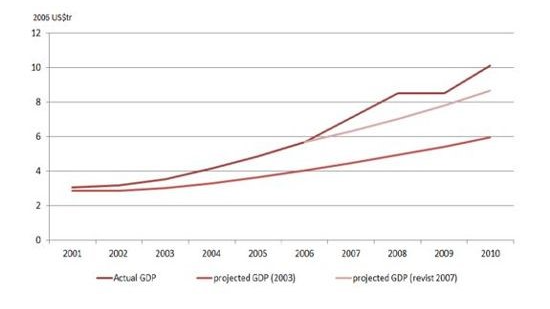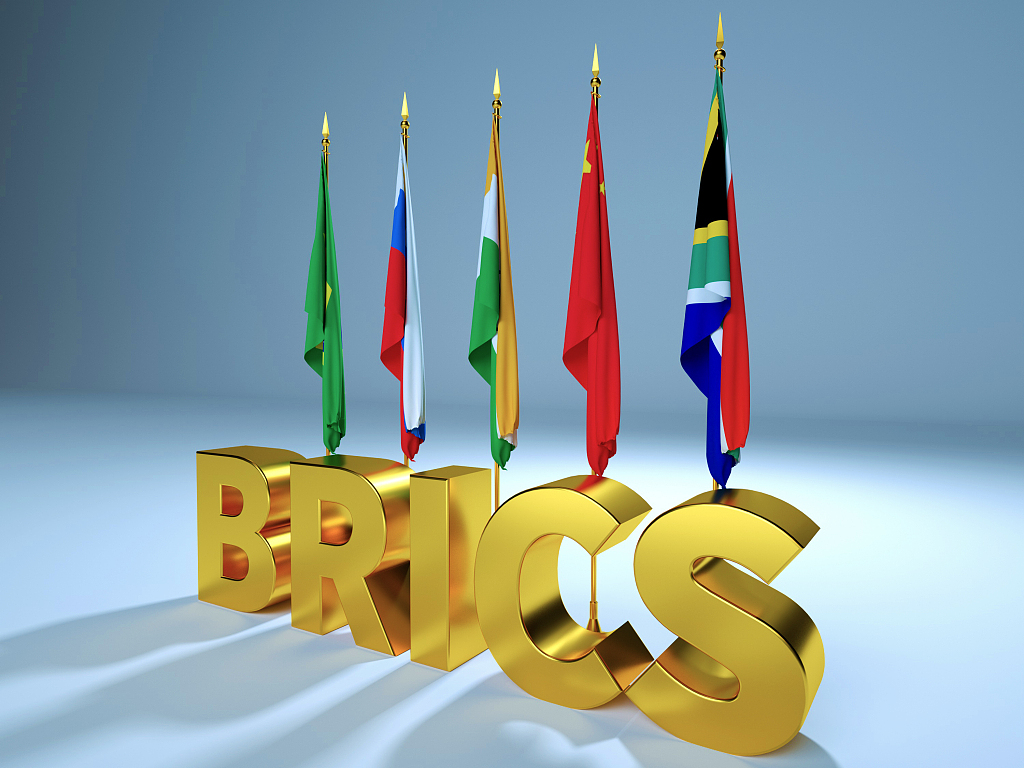The history of the BRICS is well known. With the exception of South Africa, they were all significant emerging economies that were experiencing strong economic growth when the British economist Jim O’Neill first grouped them together in 2001 as a technical term. Although the BRICS convened their first informal gathering in 2006 and their first leaders’ summit in 2009, they did so because they understood that economic power might convert into political influence.
Or so it seemed, the bloc was progressing. But after seven years, seven summits, and one additional member (South Africa joined in 2010), the BRICS’s initiatives and goals are already catching on across nations, races, and regions.
The differences between the BRICS countries are widely acknowledged. The economic production of China is around 30 times greater than that of South Africa and nearly double that of the remaining BRICS nations put together. Their systems of government are very different, ranging from China’s one-party system to Russia’s illiberal model to India’s strong democracy.
But as the BRICS countries have become more active in forming economic alliances around the world, many people have begun to wonder what this involvement means for them. This is not an easy question. Rooting for or against the BRICS raises unanswered questions. What’s in it for the country? Does it add to the current macroeconomic outlook? Will it be just another diplomatic alliance between countries that withers in no time? And more specifically, what does it offer Nigeria?
The BRICS nations really saw far faster growth than was anticipated by Goldman Sachs experts. From roughly 3 trillion US dollars in 2001 to $10 trillion in 2010, the BRICS governments’ economies have grown. The four BRICS states were among the first to emerge from the shadows of crises and resume high GDP growth in the aftermath of the global economic crisis that spanned 2007–2009. The BRICS have demonstrated their ability to take the lead in driving the global economy in the future, in contrast to established economies that are only slowly emerging from their deep slump. Based on responses from 827 corporate directors from 61 different countries, an IE Business School study (IE Business School, 2011) reveals that the highest growth rates in 2012 will be found in the BRICS.

Actual GDP vs. projected GDP of the BRICS from 2001-2010
By linking their domestic economies with the global market, the BRICS are able to experience rapid growth thanks to trade and investment liberalization. It is generally acknowledged that the globe has become more interconnected as a result of the forces of economic, technological, political, social, and cultural globalization. The BRICS have deepened their institutionalization over time. The nations have conducted yearly summits with an expanding agenda since 2009. China is predicted to surpass the United States and have the greatest gross domestic product (GDP) in the world by the year 2030, with a projected value of $31.7 trillion. Brazil, India, and Russia will round out the top 10.
Another significant event was the founding of the New Development Bank (NDB) in 2014 with $50 billion in seed money. The BRICS Contingent Reserve Arrangement (CRA), a liquidity instrument that supports members experiencing short-term balance of payments pressures or currency volatility, was also simultaneously established.
According to projections and pledges, the BRICS is a new alliance of rising dissidents who, measured by GDP, now together exceed not just the ruling hegemon and major world economic powers. Nigeria’s participation in this could help the nation break its strong reliance on the US dollar.
A decade ago, a Nigerian could buy $1 for less than 200 NGN. Presently, it is almost triple the cost at the official rate. In spite of this increase, Nigerians still struggle for the US dollar to enable them to trade globally. By one measure, the dollar is now used in 84.3% of cross-border trade. This and several other macroeconomic variables have contributed to the constant trade deficits in the country. In comparison, in 2022, as a whole, the BRICS ran a trade surplus, also known as a balance of payments surplus, of $387 billion. Nigeria can benefit from such a package.
The BRICS are currently in the news at a time when much of the world, especially the advanced economies, is mired in crisis. Global financial inflation is accompanied by a host of developing countries pushing for dominance. There has arguably never been a better time to push their ideal. However, the story has not been considered in its entirety. There are claims that the BRICS is just an agitation of countries jealous of the US’s sustained influence and control of the global market, and this is not all that should be considered.
The BRICS are suffering significant economic difficulties. In addition to a well-documented downturn in growth, China has also seen significant volatility in the stock market and currency devaluation. The economies of Brazil and Russia are shrinking, South Africa’s growth has halted, and India, despite continuing to grow reasonably strongly, must implement significant reforms.
In a nutshell, the BRICS are falling short of their promise of economic revitalization in their own countries. Brazil and Turkey both expressed a desire to advance a different nuclear agreement with Iran at the beginning of the decade. However, due to pressure from corruption scandals and declining commodity prices, that plan failed, and Brazil quit the international scene.
Additionally, South Africa and India continue to perform poorly in several macroeconomic variables. Regarding Russia, its Ukraine stance has severely harmed its reputation.
As seen by President Xi Jinping’s visit to Washington, DC, this week, which resulted in significant pronouncements on climate change, cyber security, and international development, only China has demonstrated an aptitude for leadership. Additionally, China has been working on projects like the revival of the Shanghai Cooperation Organization and the Asian Infrastructure Investment Bank.
The creation of the New Development Bank (NDB), the Contingent Reserve Arrangement (CRA), and numerous other financial coordination instruments serve as examples of the BRICS’ greatest successes in the field of financial cooperation. However, they have yet to demonstrate any economic advantages for the member states that are developing. Is it time for Nigeria to trust them? Share your thoughts in the comment section.





